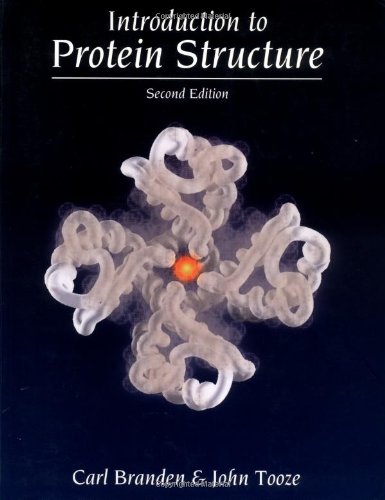Introduction to Protein Structure pdf free
Par hiltz billie le dimanche, décembre 6 2015, 21:37 - Lien permanent
Introduction to Protein Structure. Carl Branden, John Tooze

Introduction.to.Protein.Structure.pdf
ISBN: 0815323050,9780815323051 | 415 pages | 11 Mb

Introduction to Protein Structure Carl Branden, John Tooze
Publisher: Taylor & Francis
Proteins, The Structure and Function, An Introduction. Introduction to Protein Structure provides an account of the principles of protein structure, with examples of key proteins in their biological context generously illustrated in full-color to illuminate the structural principles described in the text. In general, the class will be a survey . I-TASSER: a unified platform for automated protein structure and function prediction from The Zhang Laboratory. Proteins play an important role in living systems due to their unique structures that are large, flexible and complex (Schellekens 2004, Kumar et. Researchers at Peking University's Beijing Nuclear Magnetic Resonance Center (BNMRC) can determine 3D protein structures 1000 times faster, thanks to the grid. Human immunodeficiency virus type 1 (HIV-1) exhibits high genetic variability, with strains divided into three main groups: major (M), which are the cause of most HIV-1 infections worldwide, outlier (O) and new (N) that are non M and non O [1]. The Protein Crystallography Station at Los Alamos Neutron Science Center is a high-performance beamline that forms the core of a capability for neutron macromolecular structure and function determination. Hi everyone, this is a shorter post about a glance at proteins – most of the information came from my notes and Timberlake's book which is referenced down the bottom. Thanks and congratulations for the blog :). It is therefore easy to understand that the axial skeleton is non-specific protein but it is a common structure. Computer Networks and Distributed Systems Notes slide January 18: Chapter 1 Intro by Anda Iamnitchi . In this review we will focus on the relationship between the structure of the Tat protein and its function as a secreted factor. Which gives its identity to a protein is the set of side chains of the proteinogenic amino acids the component. Examples of other computational techniques that we will cover in this seminar are microarray analysis, molecular dynamics simulations, protein structure prediction and determination, all of which are routinely used to develop, guide, and check biological hypotheses. The proposed model for the search for conservative areas in a protein family was introduced on the basis of geometric characteristics of the polypeptide backbone conformation [2] and information theory. To this end we will summarize some of the exogenous Introduction. According to the neutral theory of evolution, the functionality of protein with disadvantageous amino acid substitution can be restored by another amino acid substitution which compensates the first one to sustain the fitness [1].
30 Arduino Projects for the Evil Genius epub
Theorems and Problems in Functional Analysis ebook download